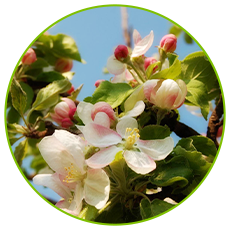Nov . 20, 2024 09:24 Back to list
high quality mango bagging
The Importance of High-Quality Mango Bagging
Mangoes, often referred to as the king of fruits, are beloved for their sweet, juicy flavor and vibrant color. However, the journey from orchard to market can be fraught with challenges, including pest infestations, diseases, and physical injuries during transportation. To ensure that mangoes retain their premium quality and reach consumers in perfect condition, high-quality bagging has become an essential practice in mango cultivation.
What is Mango Bagging?
Mango bagging involves covering the fruit with protective bags made from various materials, typically non-toxic and breathable. This technique not only shields the mangoes from external threats but also plays a significant role in enhancing their overall quality. The bagging process generally begins shortly after the fruit sets, usually when mangoes are around 4-6 centimeters in size.
Benefits of High-Quality Bagging
1. Pest and Disease Protection One of the primary benefits of bagging mangoes is protection against pests and diseases. Mangoes are susceptible to a wide range of insect pests, including fruit flies, mealybugs, and aphids, which can cause significant damage to the fruit. Additionally, fungal diseases such as anthracnose can adversely affect mango quality. High-quality bags create a physical barrier, significantly reducing the chances of pest infestation and disease spread.
2. Sunburn Prevention Mangoes are sensitive to excessive sunlight, which can cause sunburn and discoloration on the fruit's surface. This not only affects their appearance but can also alter their flavor and texture. Bagging helps create a shaded environment for the mangoes, allowing them to develop their full flavor potential without the risk of sunburn.
3. Improved Color and Size When mangoes are properly bagged, they tend to exhibit better color development compared to unbagged fruit. The controlled environment provided by high-quality bags promotes uniform ripening and can contribute to a larger fruit size. This is particularly important for farmers focused on obtaining high market prices for their produce.
high quality mango bagging

4. Reduction of Physiological Disorders Certain physiological disorders, such as black tip and spongy tissue, can significantly impact mango quality. High-quality bagging minimizes exposure to adverse environmental conditions that can trigger these disorders, ensuring a healthier fruit upon harvest.
5. Minimized Mechanical Damage Harvesting and transporting mangoes often lead to bruising and mechanical damage, resulting in waste and decreased market value. Bagging provides a cushioning effect that helps protect the fruit from physical impacts, ensuring that they arrive at the market in optimal condition.
Best Practices for Mango Bagging
To maximize the benefits of bagging, it is essential to adhere to certain best practices. Farmers should choose breathable, high-quality bags made from materials that allow air circulation while still providing adequate protection. It is also important to ensure that bags fit snugly around the fruit to prevent insects from getting inside.
Timing is crucial; bagging should occur at the right developmental stage to ensure effective protection without interfering with natural growth. Regular monitoring of the bagged mangoes is advisable to check for any signs of disease or damage.
Conclusion
High-quality mango bagging is a vital component in the production of premium mangoes. By providing protection from pests and diseases, preventing sunburn, and reducing mechanical damage, bagging enhances the quality of the fruit and ensures its marketability. As consumer demand for high-quality mangoes continues to grow, investing in effective bagging techniques will become even more important for mango producers worldwide. With the right practices, growers can improve their yield and offer consumers the best possible mango experience, reinforcing the status of this fruit as the true king of fruits.
-
Pollen Peach Tree for Pure Pollination and High-Quality Peach Pollen
NewsJul.30,2025
-
Premium Cherry Pollen for Pure Pollination & Different Types
NewsJul.30,2025
-
Artificial Pollination Solutions for Various Plant Pollen Types
NewsJul.29,2025
-
Artificial Pollination Solutions for All Plant Pollen Types
NewsJul.29,2025
-
Premium Plant Pollen for Pure Pollination & Pollen Block Solutions
NewsJul.29,2025
-
Artificial Pollination Solutions for Efficient Crop Yields
NewsJul.28,2025